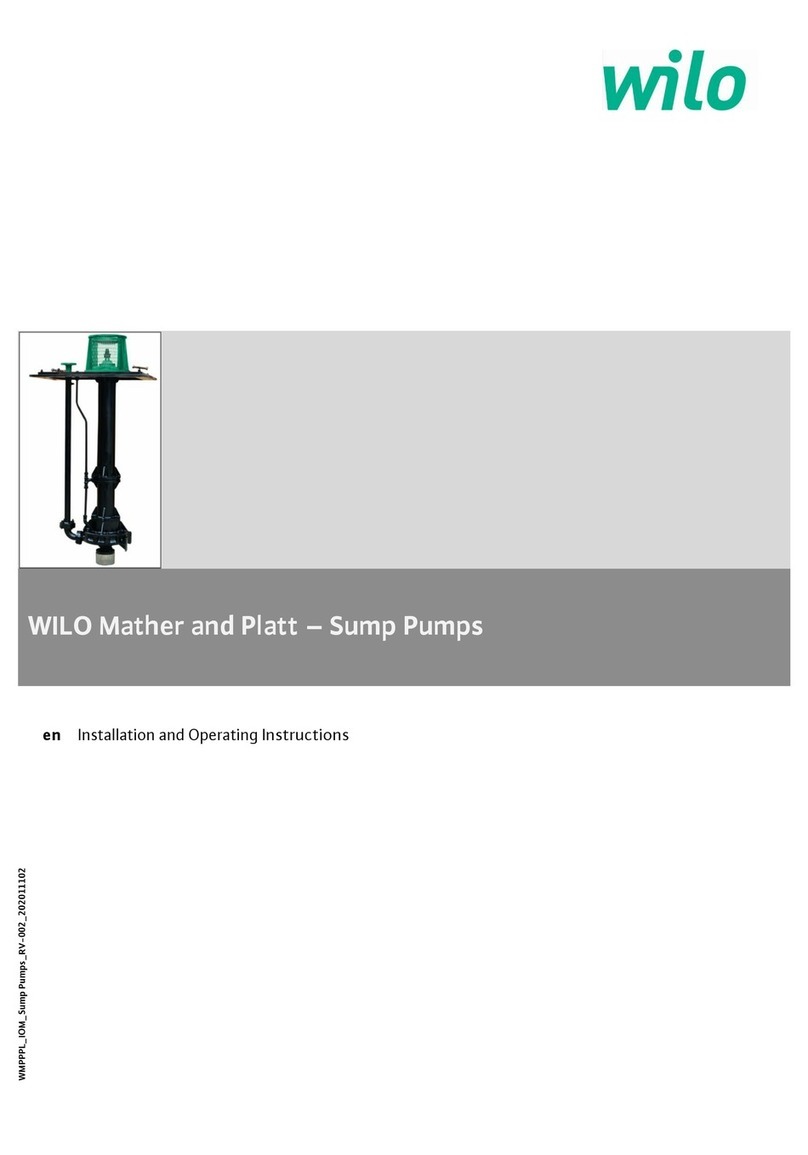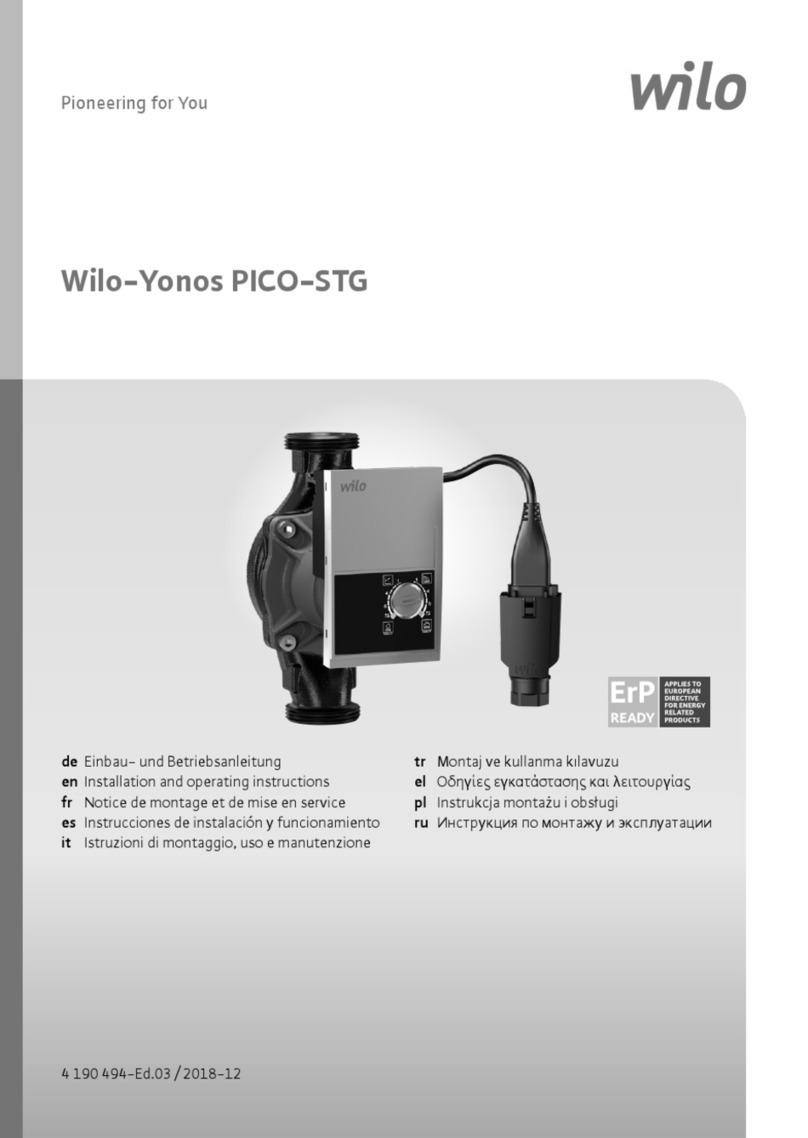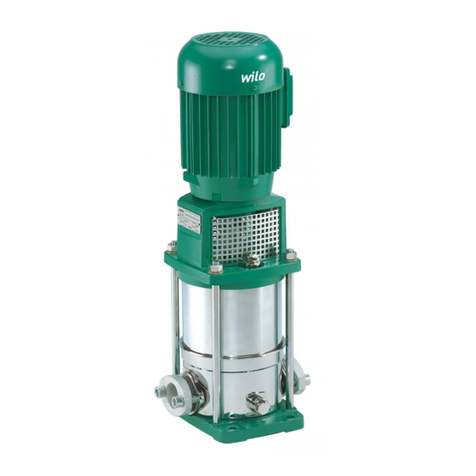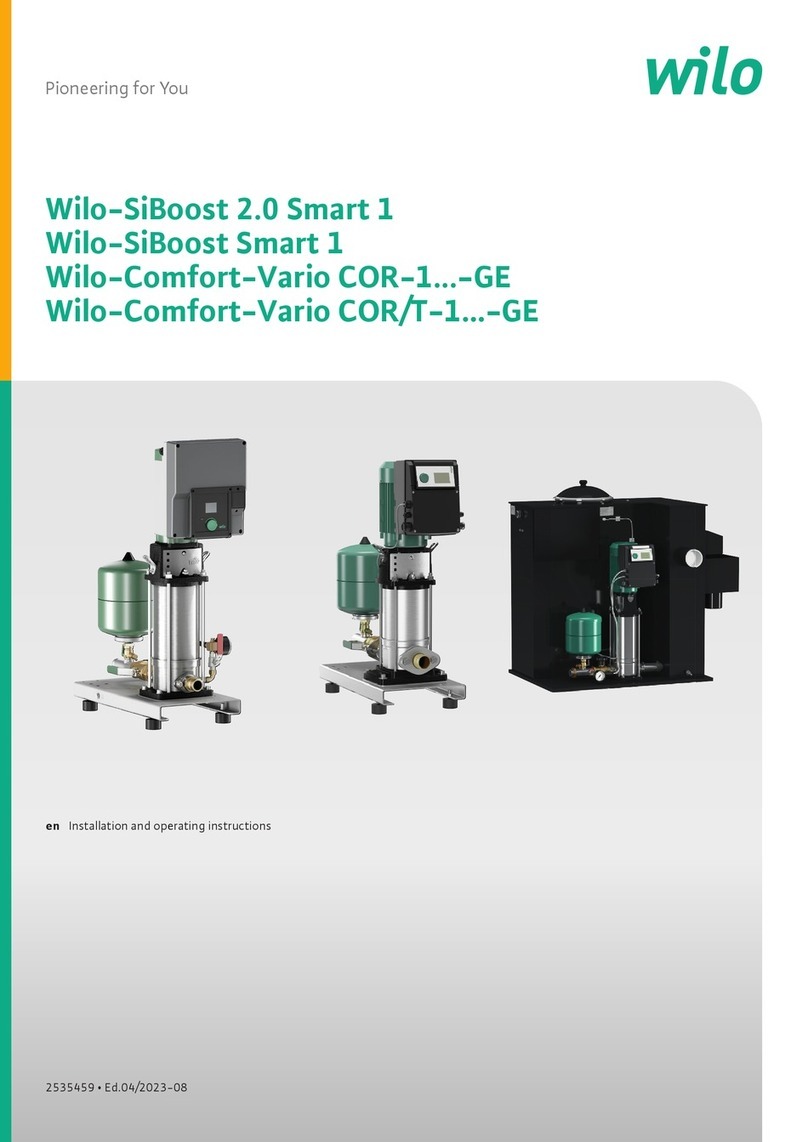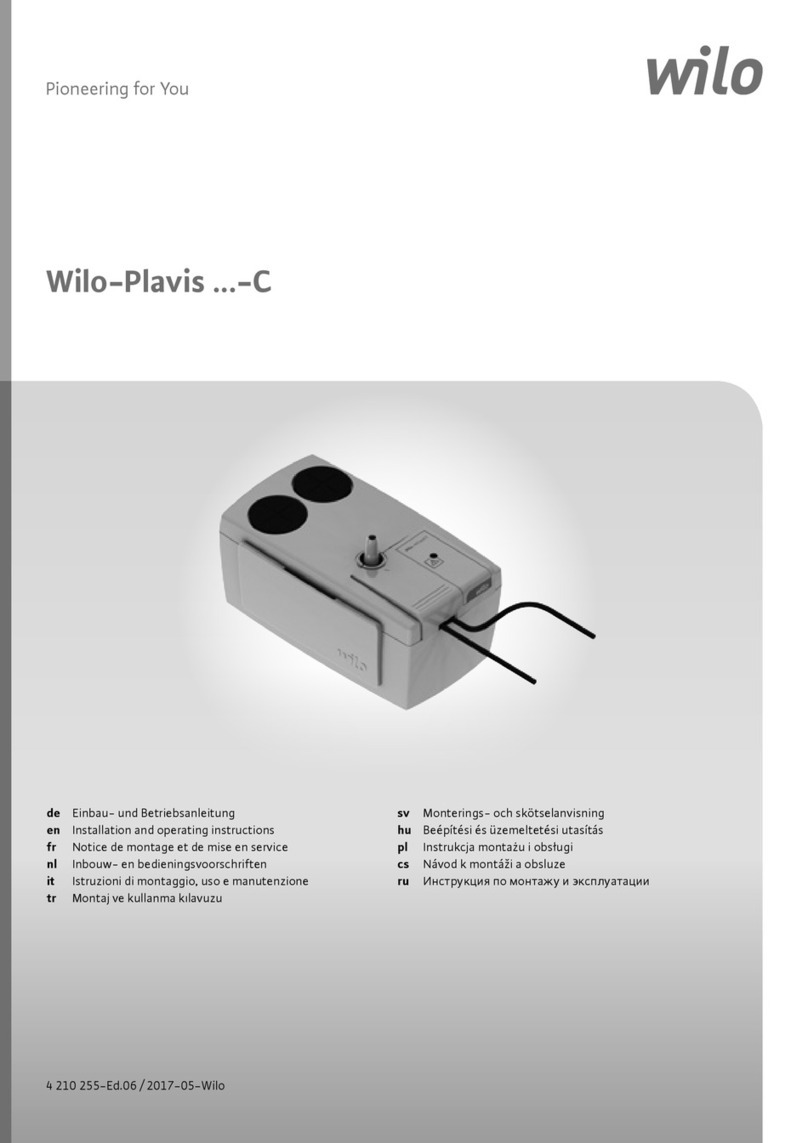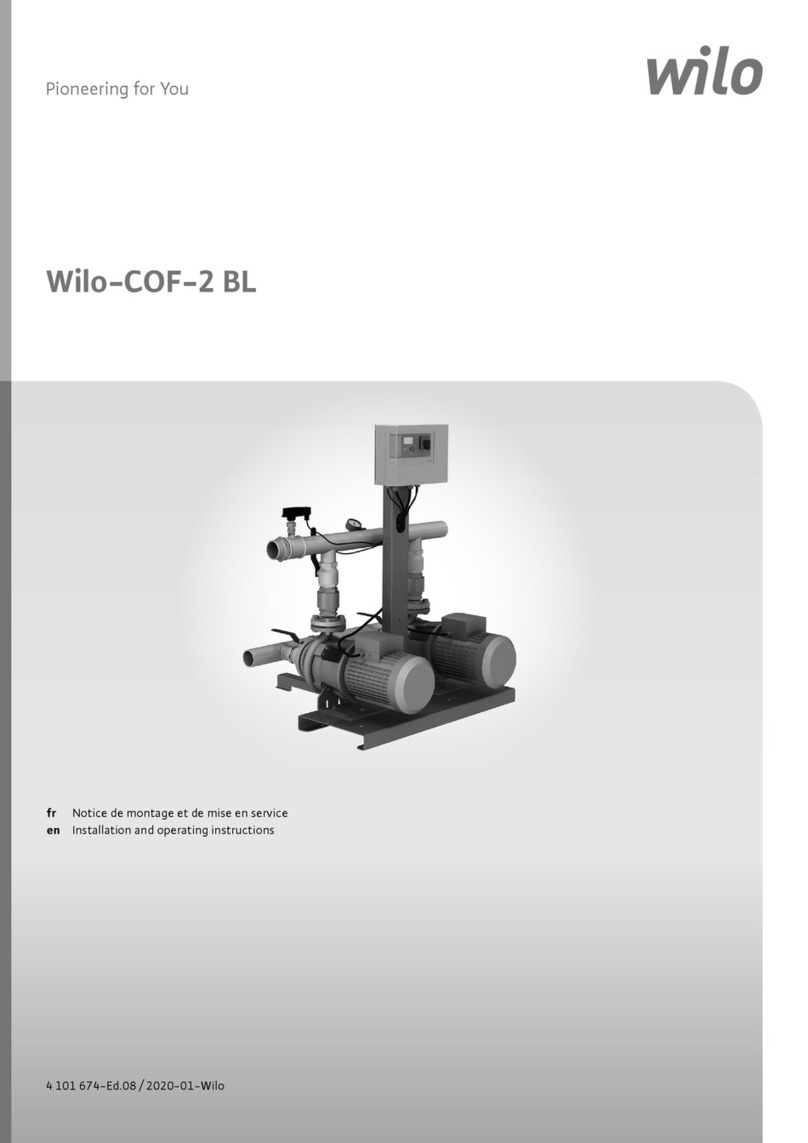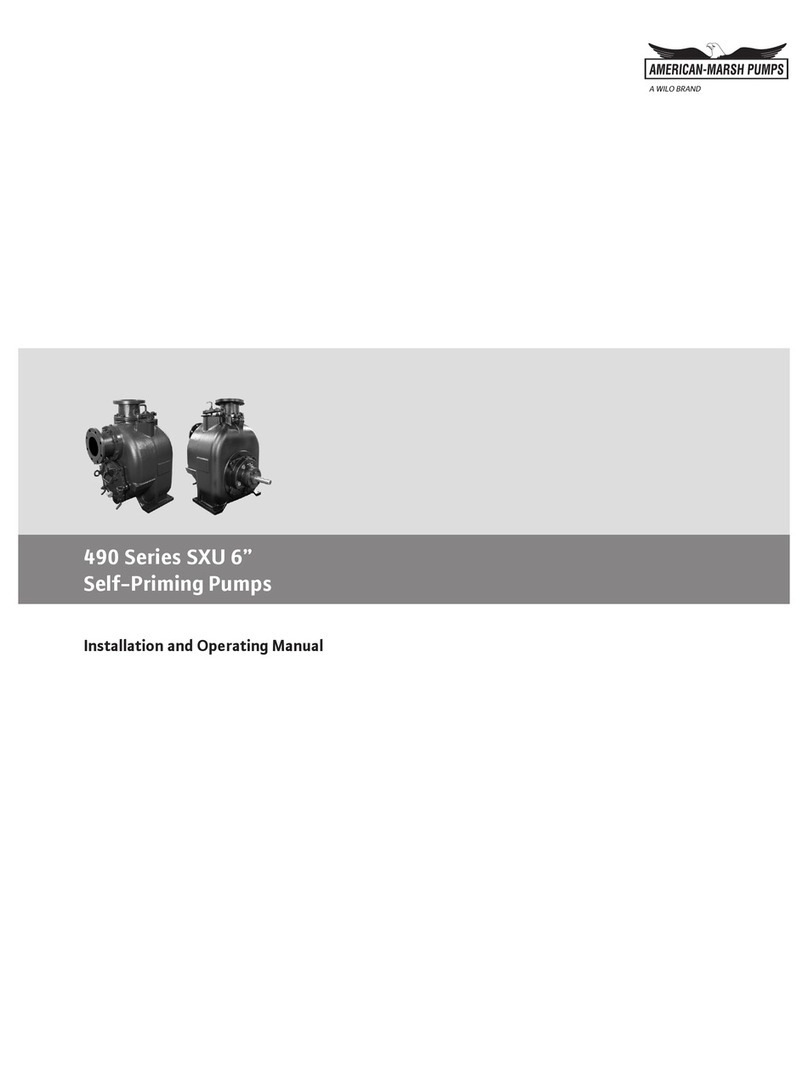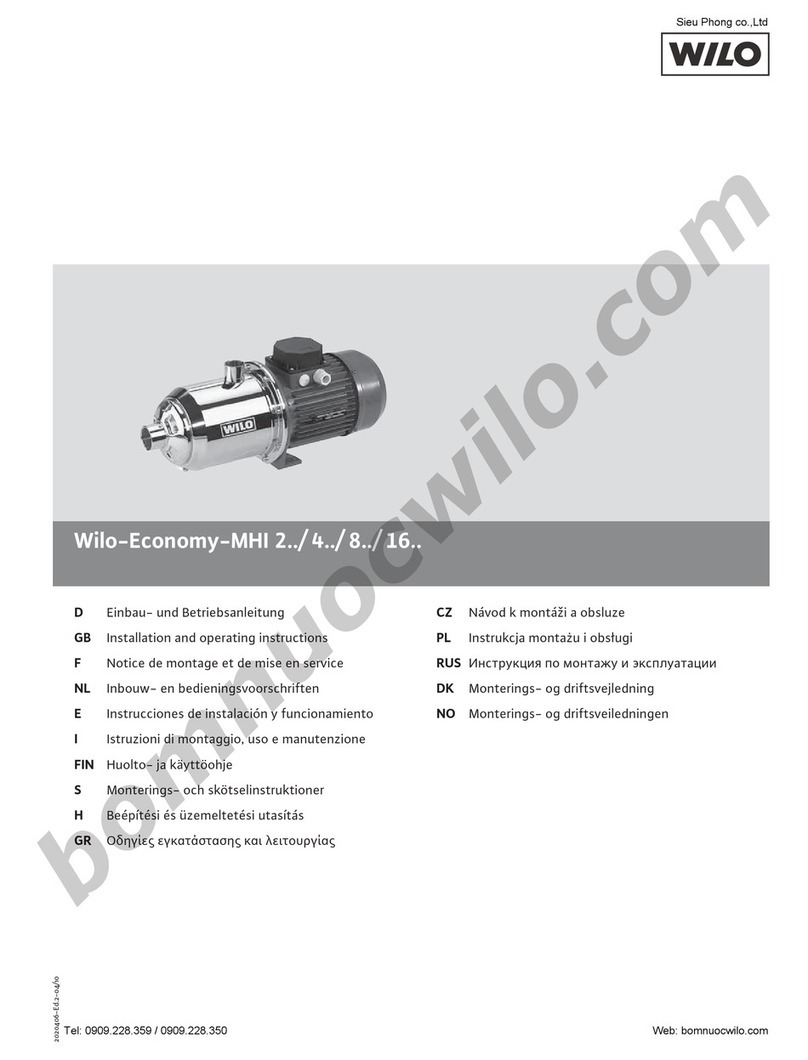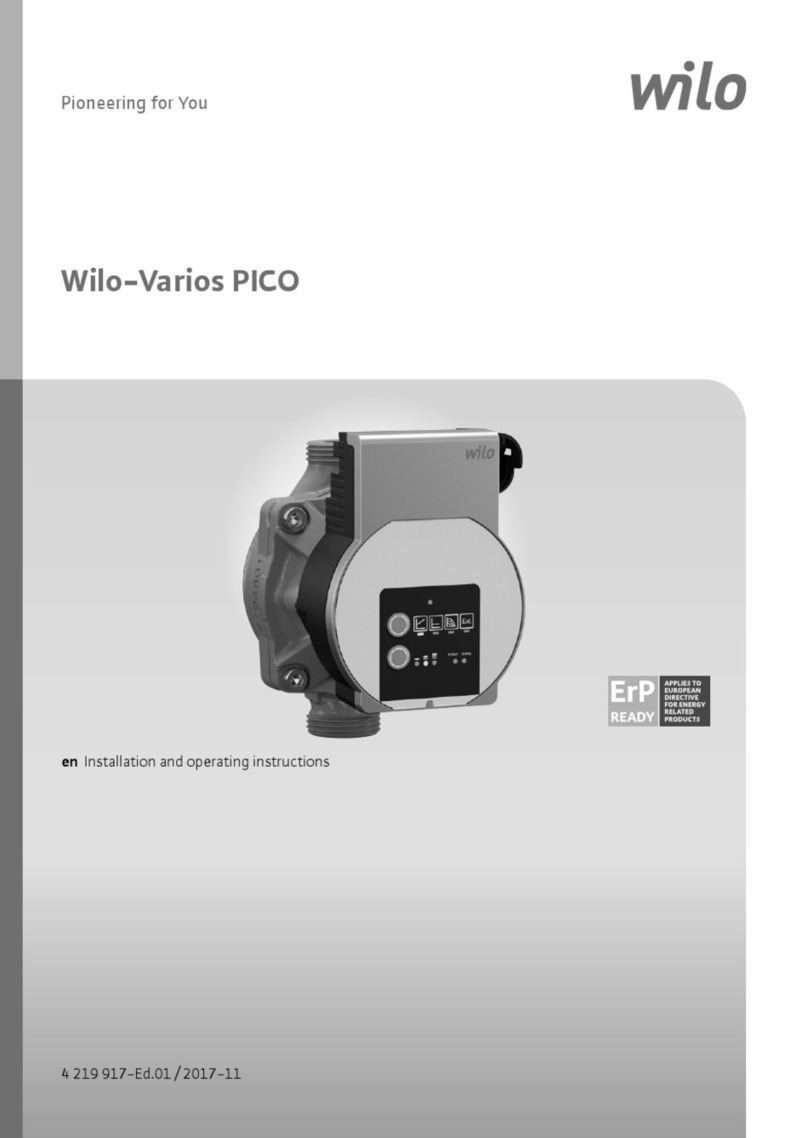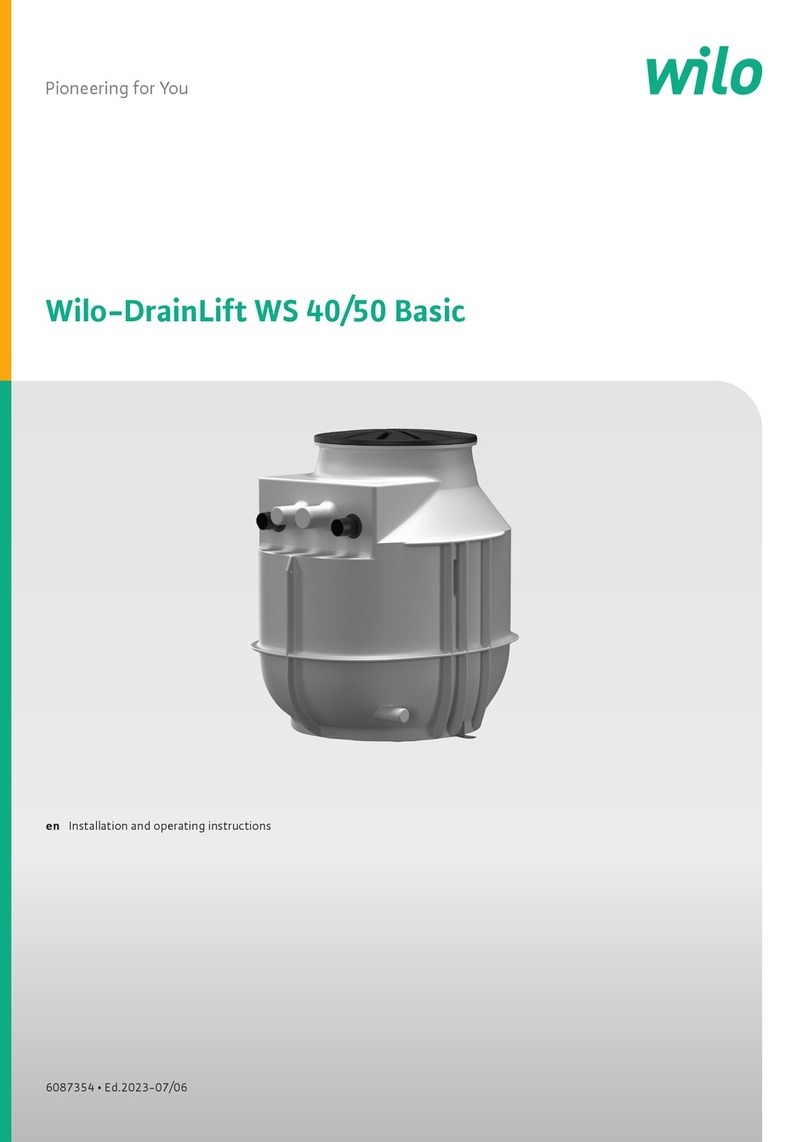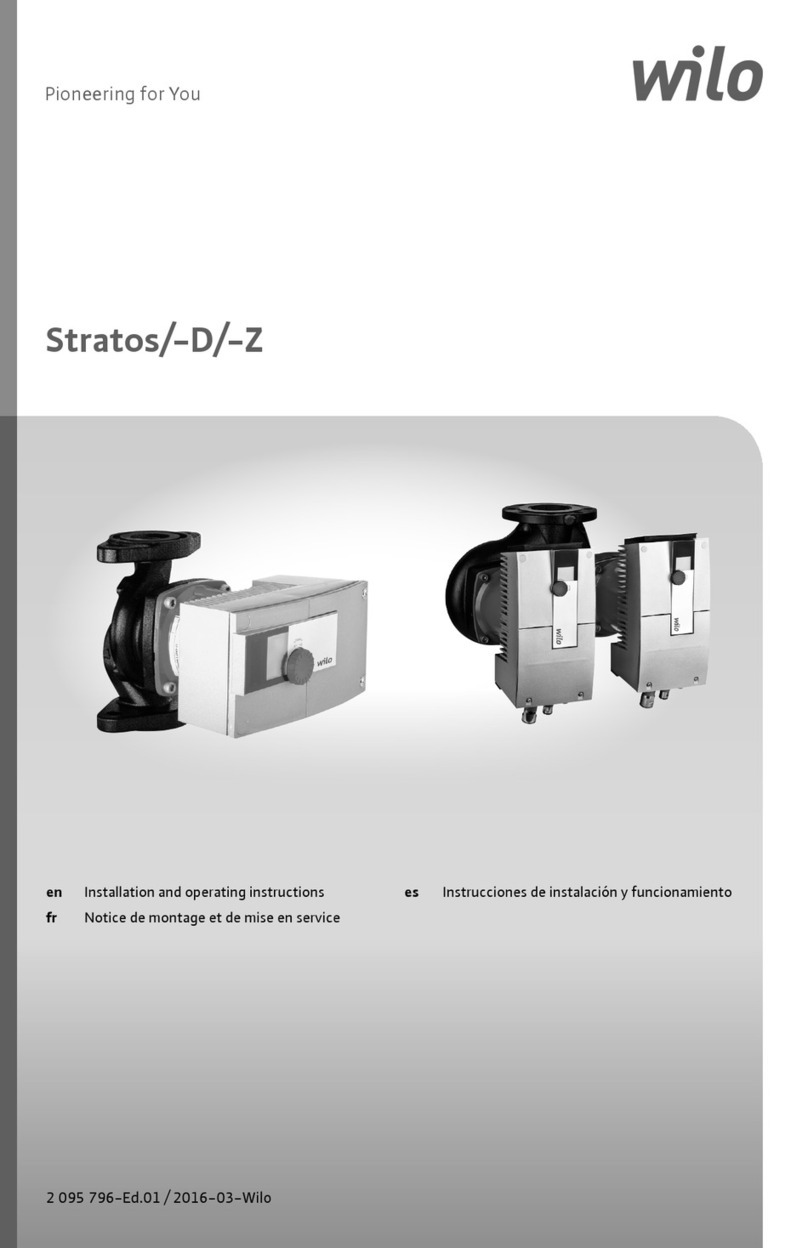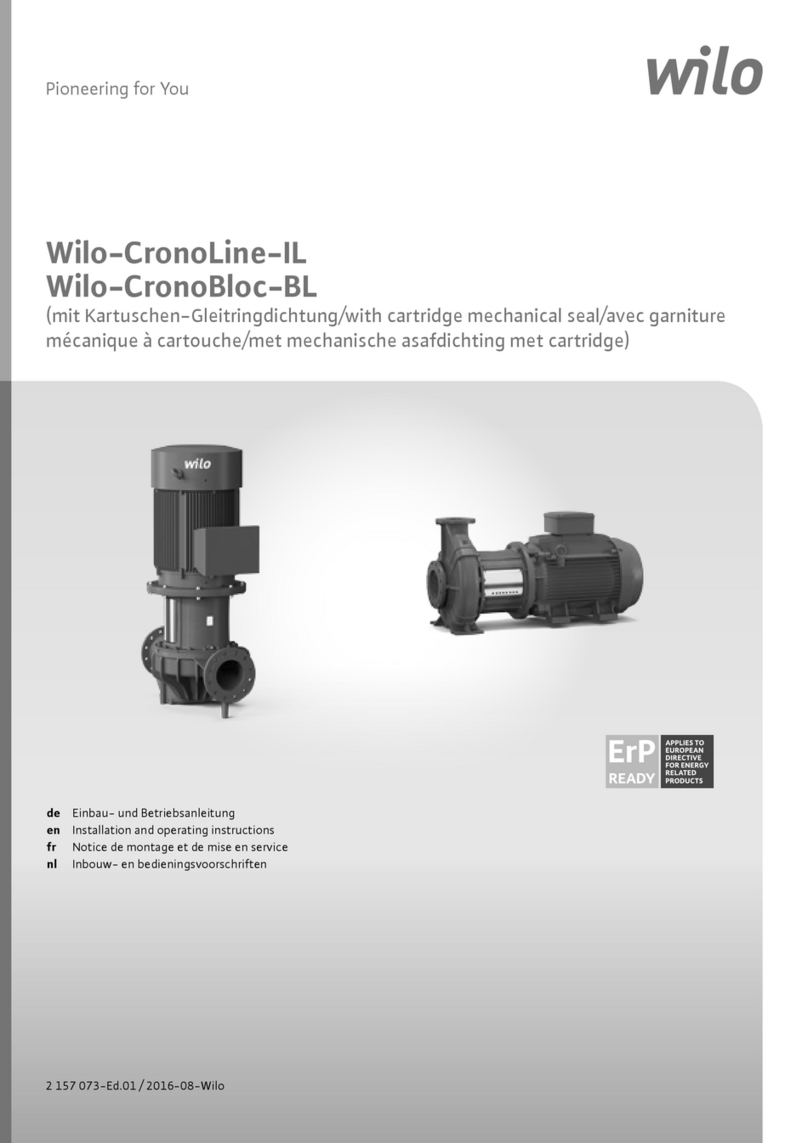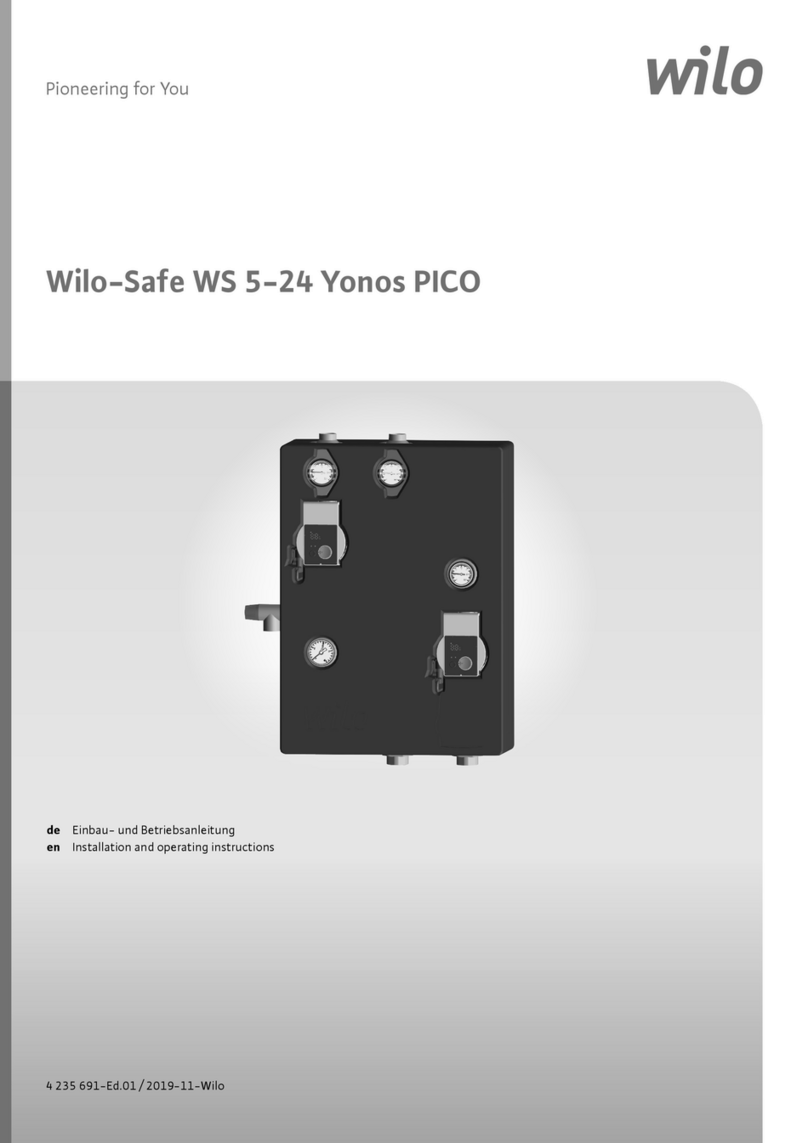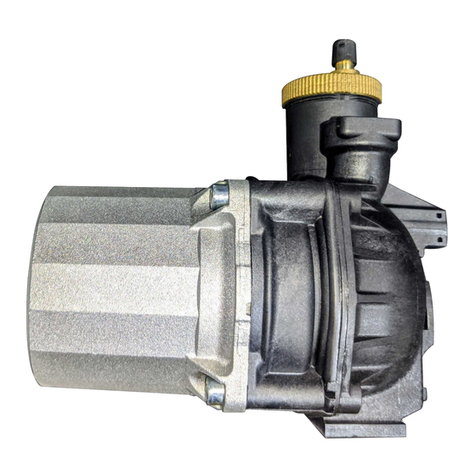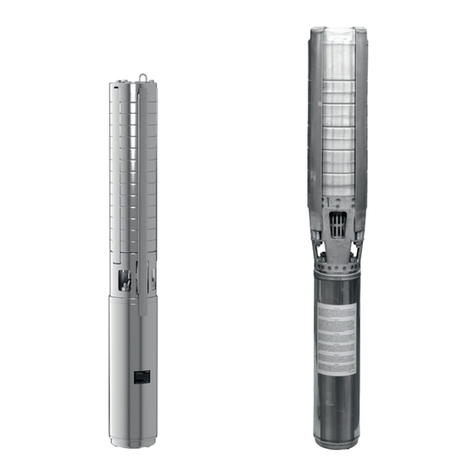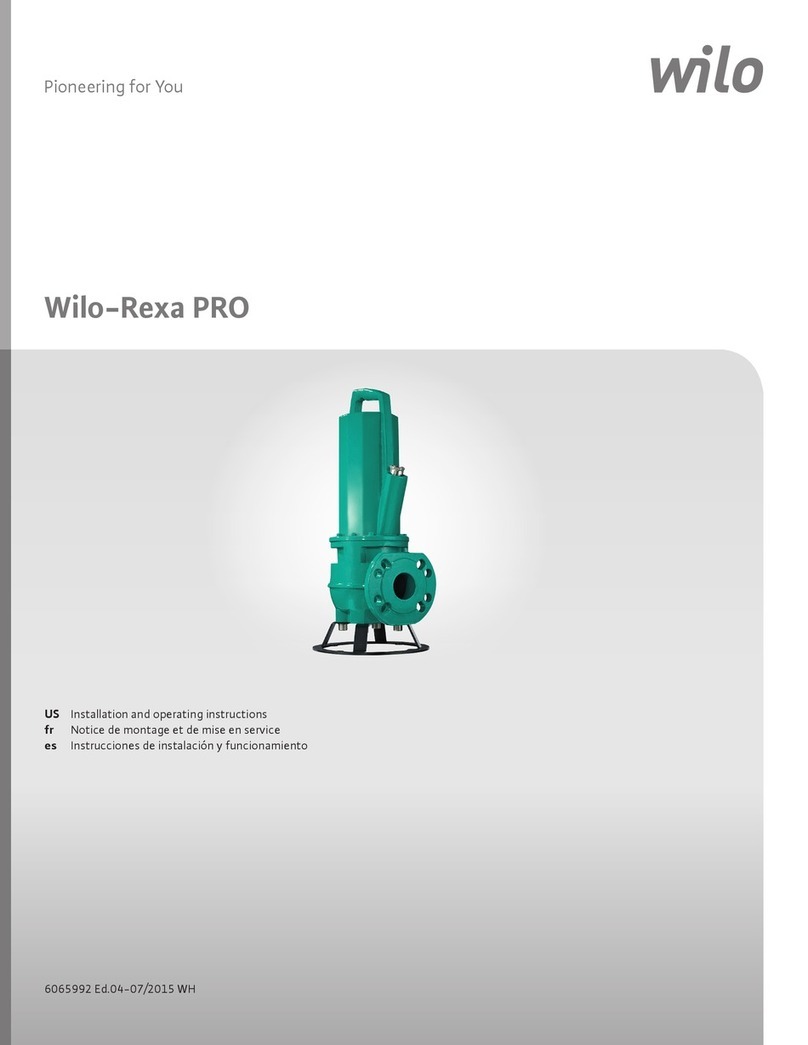
en
Installation and operating instructions • Wilo-Rexa FIT-S • Ed.01/2022-03 3
Table of contents
1 General information...................................................................4
1.1 About these instructions ..................................................... 4
1.2 Digital instructions................................................................ 4
1.3 Copyright ............................................................................... 4
1.4 Subject to change................................................................. 4
1.5 Exclusion from warranty and liability.................................4
2 Safety...........................................................................................4
2.1 Identification of safety instructions................................... 4
2.2 Personnel qualifications....................................................... 5
2.3 Personal protective equipment........................................... 5
2.4 Electrical work .......................................................................5
2.5 Monitoring devices ............................................................... 6
2.6 Fluids hazardous to health................................................... 6
2.7 Transport................................................................................ 6
2.8 Use of lifting equipment......................................................6
2.9 Installing/dismantling........................................................... 7
2.10 During operation ................................................................... 7
2.11 Clean and disinfect ............................................................... 7
2.12 Maintenance tasks................................................................ 7
2.13 Operating fluid ...................................................................... 7
2.14 Operator responsibilities...................................................... 8
3 Transportation and storage.......................................................8
3.1 Delivery................................................................................... 8
3.2 Transport................................................................................ 8
3.3 Storage ................................................................................... 8
4 Application/use...........................................................................9
4.1 Intended use.......................................................................... 9
4.2 Improper use.......................................................................... 9
5 Product description....................................................................9
5.1 Description............................................................................. 9
5.2 Materials................................................................................. 9
5.3 Technical data .....................................................................10
5.4 Type key...............................................................................10
5.5 Scope of delivery.................................................................10
5.6 Accessories ..........................................................................10
6 Installation and electrical connection....................................10
6.1 Personnel qualifications.....................................................10
6.2 Installation types.................................................................10
6.3 Operator responsibilities....................................................10
6.4 Installation ...........................................................................11
6.5 Electrical connection..........................................................13
7 Commissioning .........................................................................14
7.1 Personnel qualifications.....................................................14
7.2 Operator responsibilities....................................................14
7.3 Direction of rotation check for three-phase AC motor
...............................................................................................14
7.4 Before switching on............................................................15
7.5 Switching on and off ..........................................................15
7.6 During operation .................................................................15
8 Shut-down/dismantling...........................................................16
8.1 Personnel qualifications.....................................................16
8.2 Operator responsibilities....................................................16
8.3 Shut-down............................................................................16
8.4 Removal.................................................................................16
9 Maintenance and repair............................................................17
9.1 Personnel qualifications......................................................17
9.2 Operator responsibilities.....................................................17
9.3 Operating fluid......................................................................17
9.4 Maintenance intervals .........................................................17
9.5 Maintenance measures .......................................................18
9.6 Repairs ...................................................................................19
10 Faults, causes and remedies ....................................................20
11 Spare parts.................................................................................22
12 Disposal......................................................................................22
12.1 Oils and lubricants................................................................22
12.2 Protective clothing ..............................................................22
12.3 Information on the collection of used electrical and elec-
tronic products .....................................................................22
13 Appendix....................................................................................22
13.1 Tightening torques ..............................................................22
